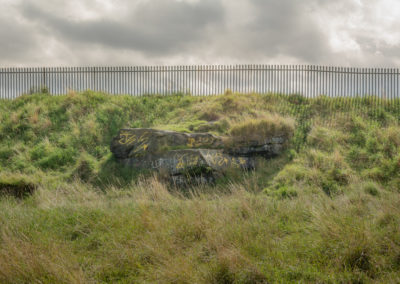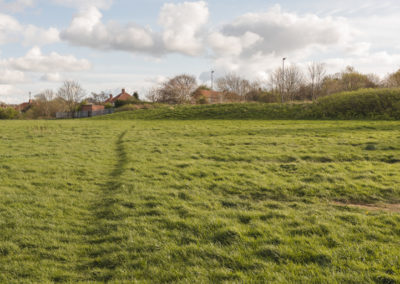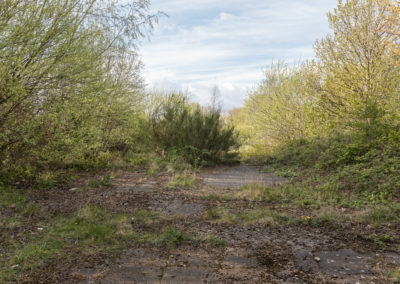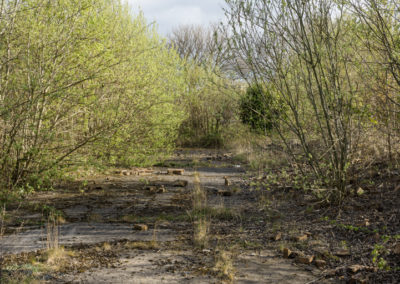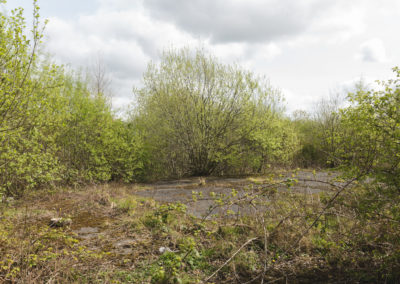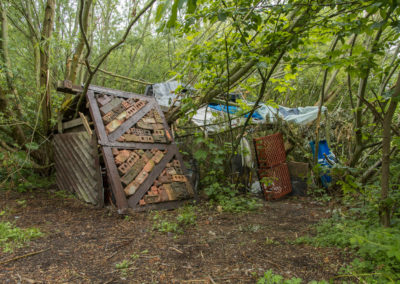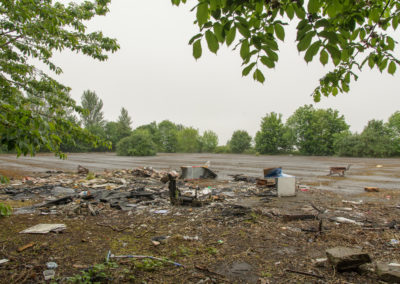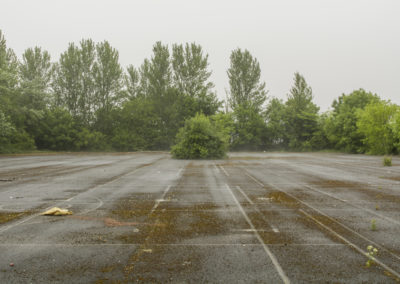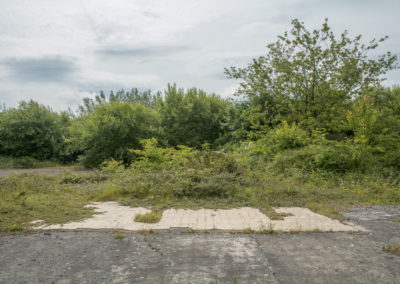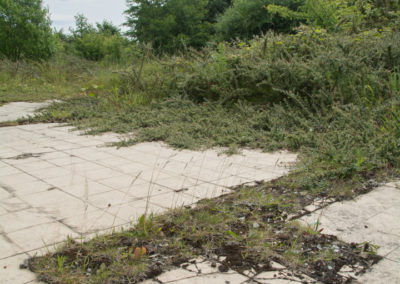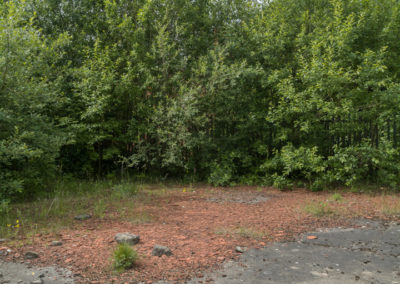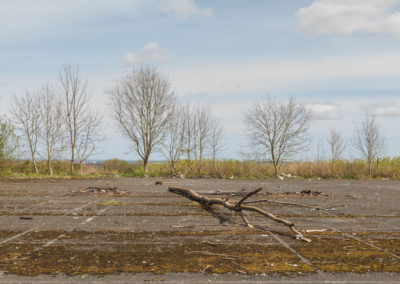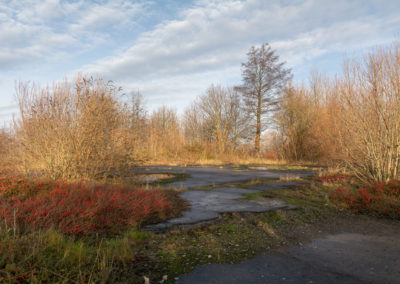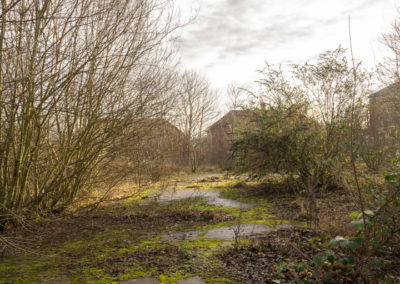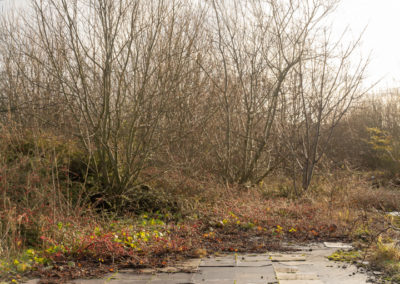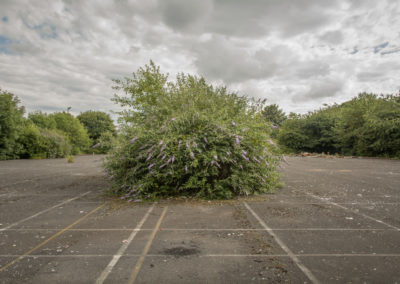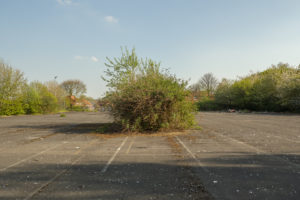
Nestled deep within a residential area in the conurbation of Gateshead, hidden away behind locked gates, the site of Elgin School is a forgotten space. Accessible only through a series of fields and broken fencing, it is a site that has seemingly fallen out of use and memory. Situated in an area that has undergone extensive residential redevelopment, the site has been left undisturbed for almost 20 years. It is not a place you chance upon, instead you arrive there only by making the decision to wander from the beaten track. Veering from the desire lines created by dog walkers, squeezing through gaps in fences and hedges, scrambling up short, steep hills – each path or opening becoming less defined, reducing the chance of someone simply stumbling upon the site.
A palimpsest in the form of a large, empty tarmacked space accompanies the site of the school. Faded lines marking out tennis, football and netball courts are overlaid by those for car parking spaces, revealing the site’s different uses over time. In the centre of the carpark a large, solitary bush has sprouted from the ground; an idiosyncratic example of the way in which nature can reclaim a space abandoned by people.
The site of the school itself is equally peculiar. Here, large clumps of trees and bushes have broken through on the site and when viewed from above outline, almost room for room, the layout of the demolished building. The ground is littered with remnants of the old school building; cracked brick tiles, curled linoleum and rusted iron bars protruding from concrete.
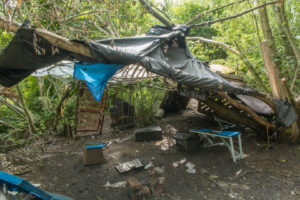
Surrounded by a dense area of human activity it is a quiet and tranquil space where the din of society is muffled, and the sounds of nature are elevated. In this space there is a calming stillness, broken only by wind-rustled leaves, the movement of birds and the occasional scurrying of a mouse or fox. The site is a most unusual oasis, a place of solitude, but also of uncertainty.
Although it may initially seem abandoned, repeat exploration of the site reveals evidence of recent and frequent human activity. Smashed glass, the charred remains of a campfire, graffiti, dumped sofas & shop refrigerators and even a small makeshift den. All of these artefacts come and go, some more temporary than others. What first seems to be a forgotten space, undergoing reclamation by nature, is revealed to be a far more complex environment. Whilst this space may have been ignored by local authorities and housing developers it is clearly still in use. My own exploration of the site must be considered part of this unsanctioned activity.
Selected images from Chris’s Elgin series are shown below (click to view at full size / format)
You can view more images from the series on Chris’s website here: Elgin
ABOUT CHRIS YOUNGER
Chris Younger (b. 1981, Newcastle) is an artist, photographer and filmmaker living in rural Durham, UK.
He uses landscape photography to explore the interactions between people, places and nature over time. His highly autobiographical work analyses formal notions of landscape through the filter of his own experiences. Younger’s work utilises uncertainty and contingency to explore the relationship between creativity and control.
Younger has a Masters degree in Photography from the University of Sunderland and recently completed an artist residency at Durham University. He exhibits internationally and has upcoming exhibitions in Germany and the UK.
Website: www.chrisyounger.uk
Twitter: @chrisyoungeruk
Instagram: @chrisyoungeruk
CREDITS
Unless otherwise stated, all words and images in this article are © Chris Younger

